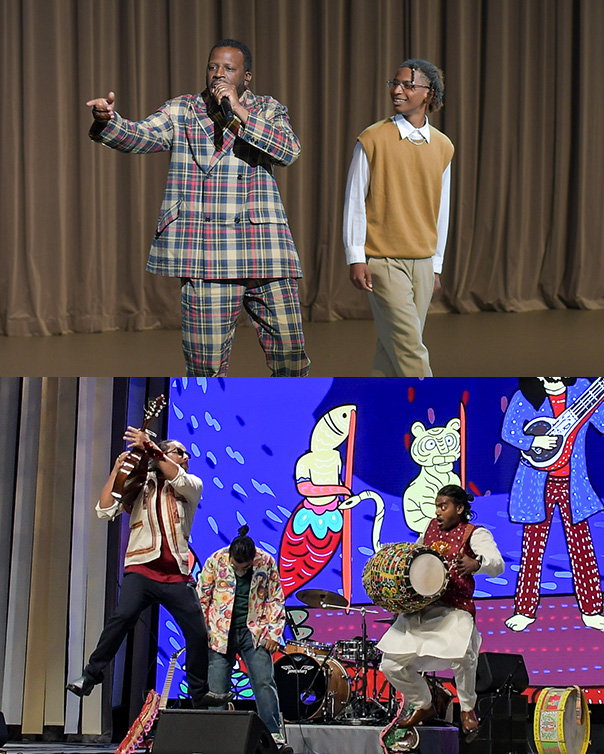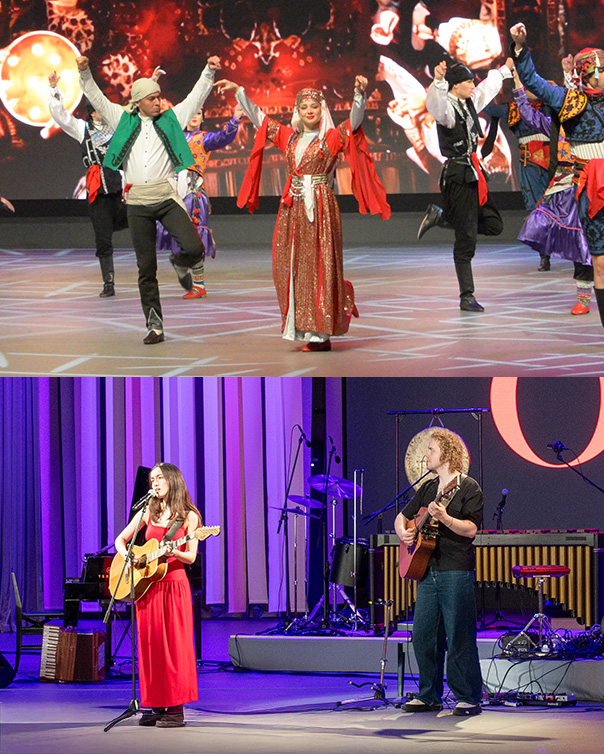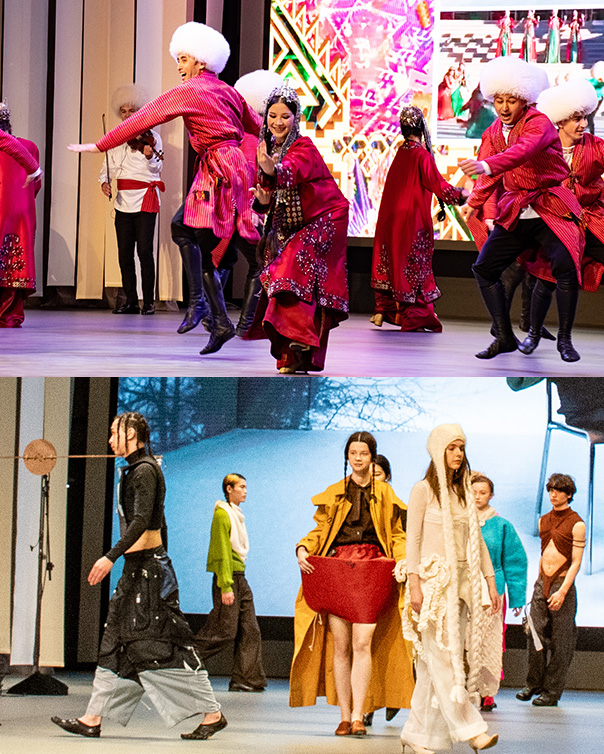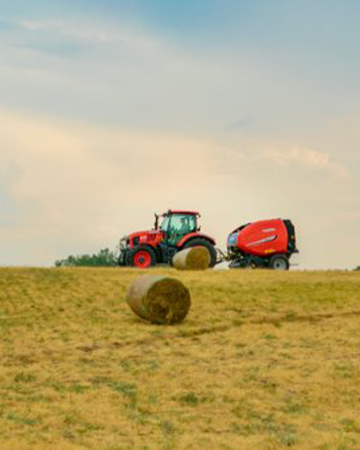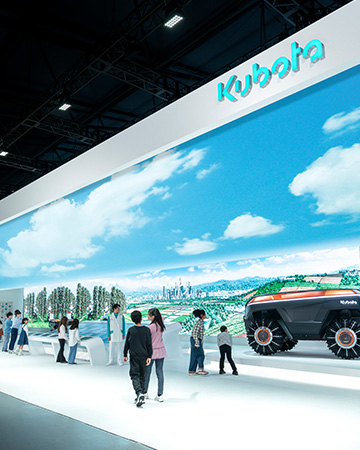
This series, entitled “Where the World and Kubota Intersect,” introduces the future that countries from all over the world envision at Expo 2025 Osaka, Kansai (Expo 2025), which opened in April 2025, and describes the related social issues and how Kubota is involved.
This fourth installment showcases Spain, which initially was linked with Japan via the Kuroshio Current and now is addressing global issues with new technologies, and Tanzania, which is cultivating its future in the land of Africa. How do Kubota technologies intersect, and how are we working together to chart a course to the future? We will explore some of these aspects through the international stage of this Expo.
The Kingdom of Spain: From the Ocean to the Sun, Co-Creation Guided by the Kuroshio Current
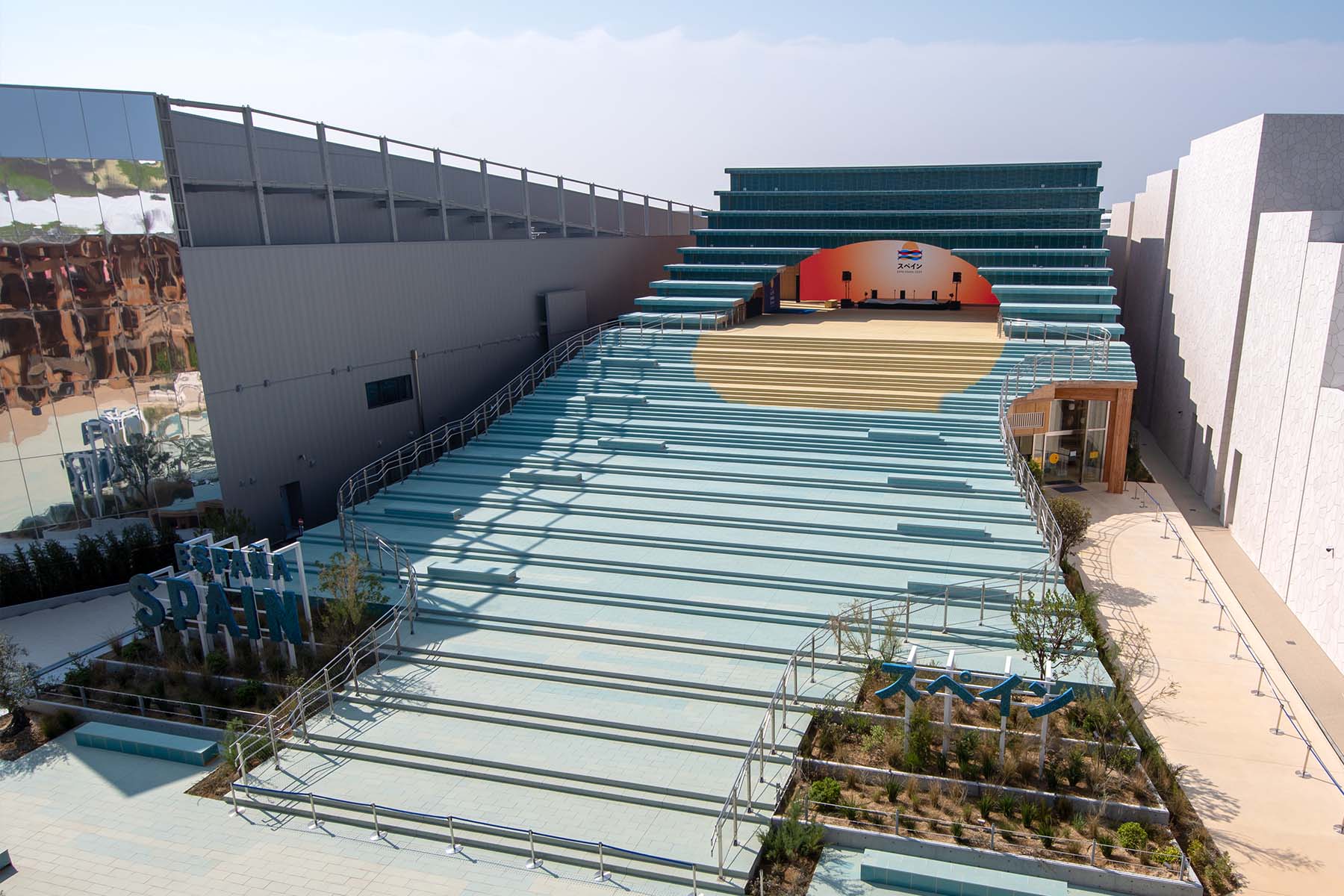
“Más vale pájaro en mano que ciento volando.”
(A bird in the hand is worth two in the bush): Spanish proverb
The impressive architectural design of the Spain pavilion symbolizes the “ocean” and the “sun.” Visitors first enter through the Plaza del Sol to be greeted by video works by contemporary artists projected on a giant screen.
In contrast, the pavilion interior is a quiet, mysterious space bringing the deep ocean to mind. There, exhibits include the ecology of marine life, the blue economy, and research on algae-based biofuels and cosmetics in the Canary Islands. In addition, a featured holographic wind power display reminiscent of Don Quixote's windmills fuses historical images of Spain with modern technology.
These exhibits are designed to allow visitors an “immersive experience” of the view of nature fostered in Spain and its efforts to address global issues.
The theme of the pavilion is “Kuroshio current. Dipping into a single ocean that connects our countries.” The crew of the San Francisco, a Spanish ship shipwrecked off the coast of Onjuku (Chiba Prefecture, Japan), was rescued by local residents in 1609, and the Keicho Embassy, an historic diplomatic mission to Europe led by Hasekura Tsunenaga, crossed the Pacific Ocean to reach Spain in 1613. As these historical facts show, Japan and Spain have been linked by the Kuroshio Current, the power of the vast ocean.
Even in present day Spain, farming, which uses the blessings of the ocean and the sun, supports the foundations of local communities. While fruit growing, including grapes, olives, and apples, has become established, the country also faces dry conditions caused by climate change, tighter EU environmental regulations, as well as an aging population and labor shortages that are also issues shared with Japan.

In this context, smart agriculture initiatives utilizing ICT are attracting attention. Kubota is supporting agriculture advancement throughout Spain through measures that include optimizing pesticide spraying according to specific crop conditions, digitizing work records, and introducing cabin safety technology to protect workers’ health. In particular, Kubota’s autonomous high-precision sprayers are expected to be a symbol of the next-generation agriculture that will achieve both reduced environmental impact and improved productivity.
These technologies are bringing a more relaxed lifestyle to Spanish farmers. They enjoy siestas (long lunch breaks that are a Spanish custom) and spend their time luxuriously. Kubota's challenges towards smart agriculture may also support such everyday scenes.
“How can we pass on limited resources to future generations while remaining in harmony with nature?” Kubota's efforts in Spain provide answers to this question.
The United Republic of Tanzania: Forms of Co-creation Cultivated in the Land of Africa
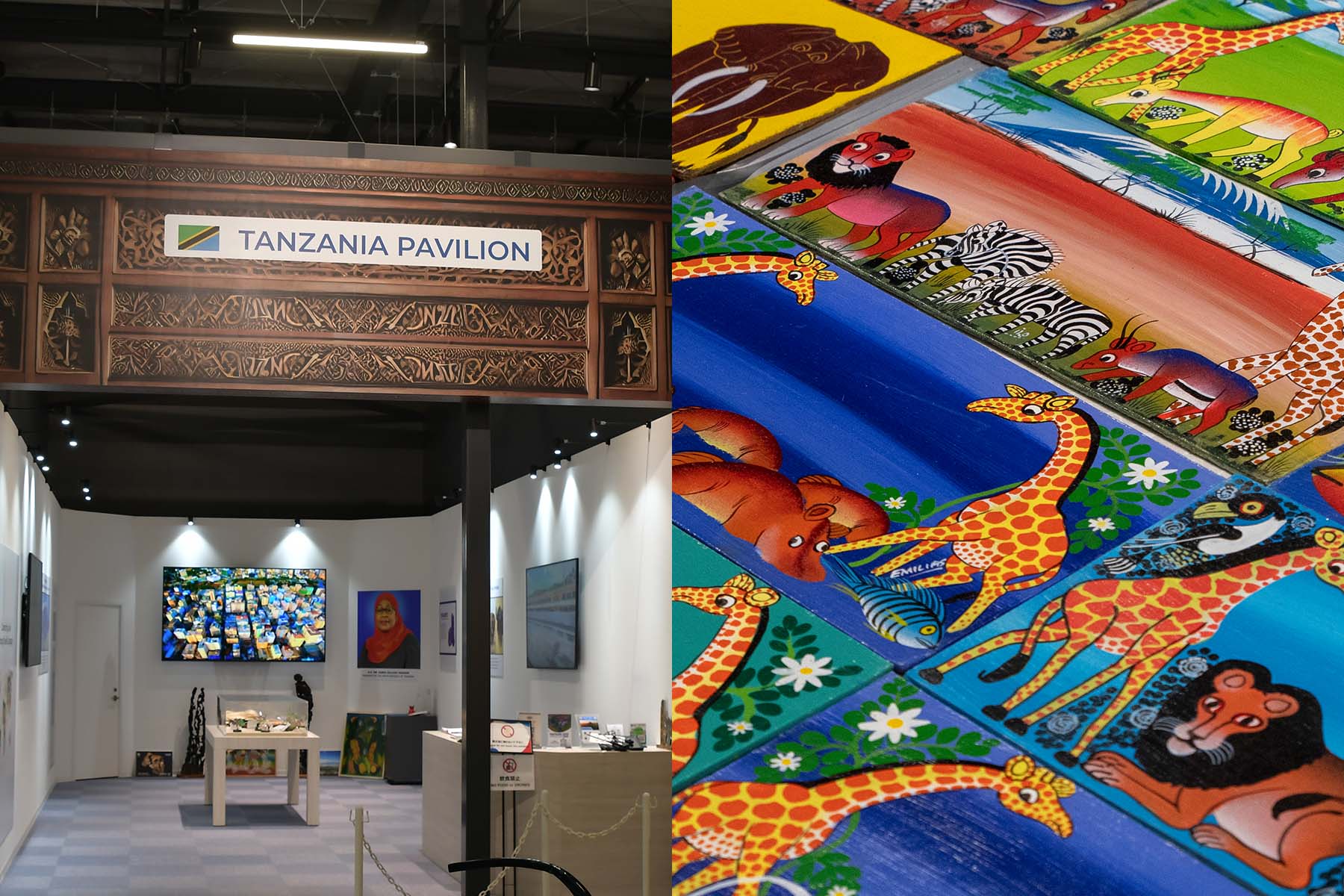
“Polepole ni mwendo”
(Slow, slow is the way to go): Tanzanian proverb
Tanzania is exhibiting in the Commons-B pavilion at Expo 2025. Twenty-four countries and regions are jointly exhibiting in this “co-creative” space where their cultures, issues, and hopes for the future each intersect.
The Tanzania exhibition showcases Tingatinga paintings with animal motifs, a tanzanite display, tea and coffee tastings, and the beauty of traditional costumes, leather products, and handmade textiles.
The country's unique charm, including its rich natural environment with national parks covering 25% of its land area, and the presence of World Heritage Sites such as Mount Kilimanjaro and the Serengeti National Park, is also reflected throughout the exhibition. Tanzania's efforts to pass on its diverse natural resources and cultural heritage to future generations as its own strengths are what can be seen through these exhibits.
Located in East Africa, approximately 80% of the population is engaged in agriculture, the foundation of their livelihoods. Corn and cassava are the major crops, but the role of rice has been reevaluated in recent years. Rice with its excellent storage properties and cooking ease is expected to not only ensure a stable food supply, but also to become a core crop for future export.
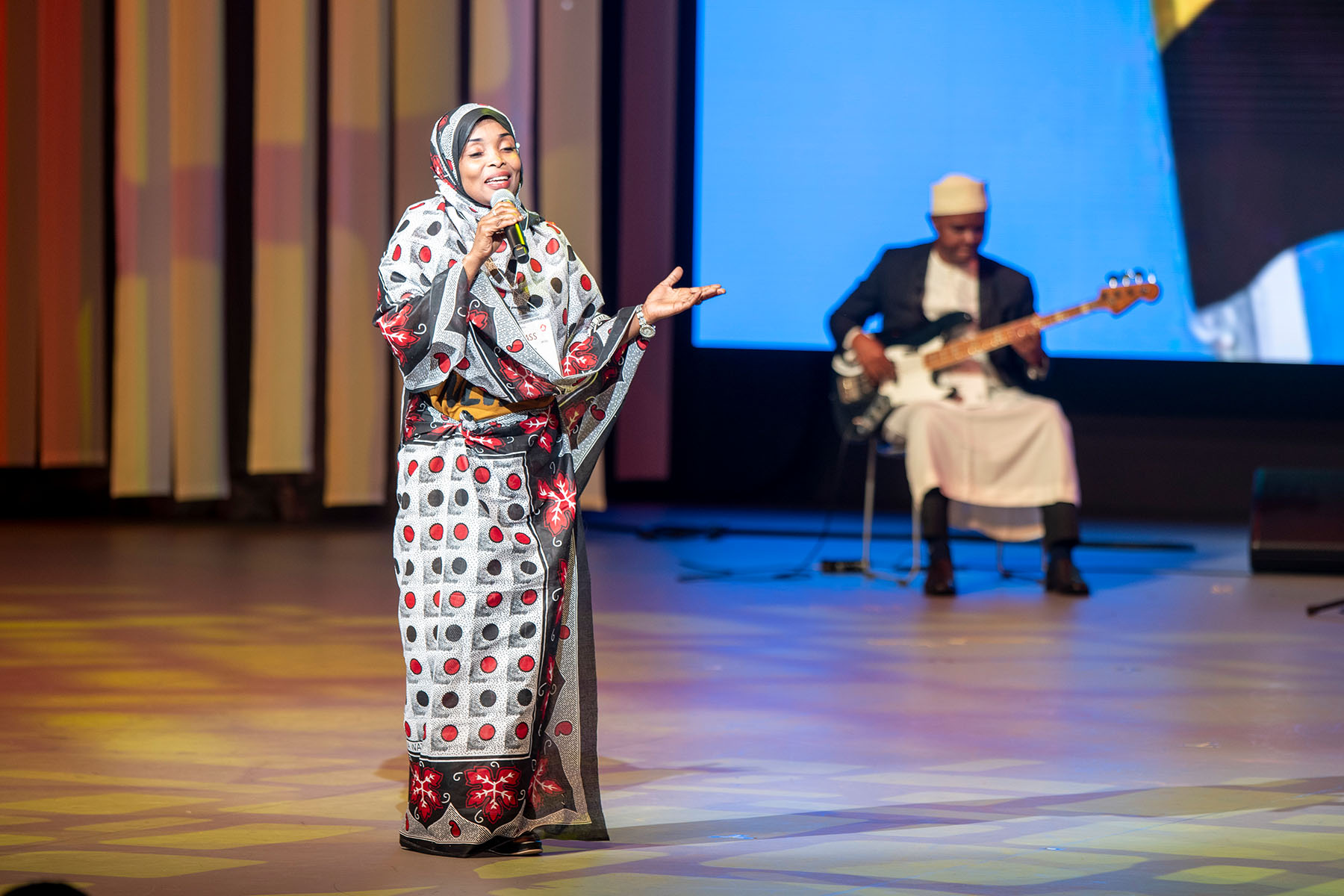
Under these circumstances, the introduction of Kubota's agricultural machinery, particularly combine harvesters, is bringing about significant changes in local farming. Work that previously took several days from harvesting to threshing can now be completed in just one day. Improved productivity has not only reduced required farmer labor, but has also had a ripple effect on their overall lifestyle, such as by allowing children to have more time to attend school.
Furthermore, the Kilimanjaro Agricultural Training Center (KATC) in northern Tanzania provides agricultural instructor and extension worker training, and its history of technical cooperation with Japan is still alive today. Established with Japanese collaboration in the 1970s, KATC continues to function as a knowledge hub for local agriculture and plays an important role in popularizing agricultural technology in Africa.
“Africa has the potential to feed the world. What's lacking is not land, but technology.”
As food issues become more serious on a global scale, rather than being on the receiving end, Tanzania is quietly moving forward to being on the growing and delivering end. Kubota's introduction of agricultural machinery and technical support is gently accompanying this progress, continuing to cultivate a sure path and to sow the seeds of the future in the land of Africa.
Spain is surrounded by the blessings of the ocean and the sun. Tanzania cultivates the vast, fertile land of Africa. In these two countries, nurtured by distinct climates, Kubota's technologies intersect with their respective futures. Whether increasingly sophisticated smart agriculture, or basic technology that protects the joy of harvesting, each is based on the same co-creative approach of “cultivating and building alongside one another.”
As an “Essentials Innovator for Supporting Life,” Kubota will continue to focus on and carefully nurture the small pockets of hope that abound all over the world.

